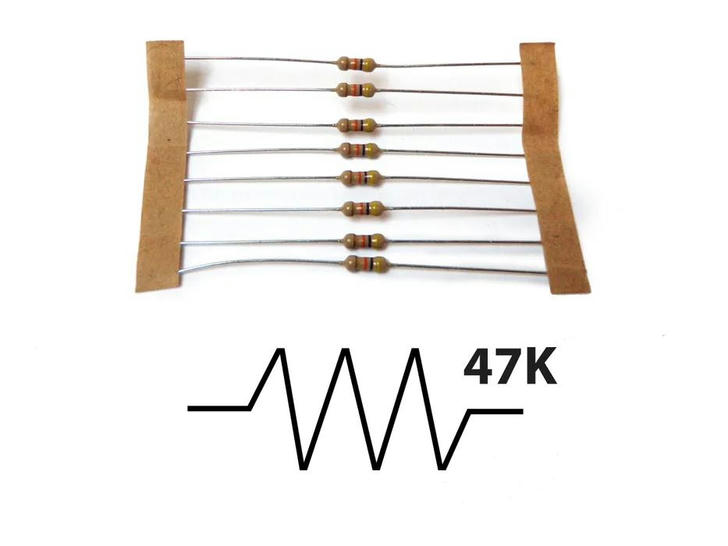Basic Electronics for Beginners in 20 Steps
Step 6: Resistors

As the name suggests, resistors introduce resistance into the circuit, reducing the flow of electrical current. In a circuit diagram, a resistor is typically represented as a squiggly line with a numerical value next to it.
The markings on the resistor correspond to different resistance values, which are measured in ohms.
Resistors also have different wattage ratings. For most low-voltage DC circuits, 1/4 watt resistors should be sufficient.
To read the values, start from the left and move towards the (usually) gold band. The first two color bands represent the resistor's value, the third represents the multiplier, and the fourth, the gold band, indicates the tolerance or precision of the component. You can decode the color codes by referring to a resistor color chart.
For example, a resistor with the color markings brown, black, orange, gold is interpreted as:
1 (brown) 0 (black) × 1,000 = 10,000 with a tolerance of ±5%
Resistor values over 1,000 ohms are usually abbreviated using the letter "K". For instance, 1,000 ohms would be written as 1K; 3,900 ohms as 3.9K; and 470,000 ohms as 470K.
When the resistance exceeds a million ohms, the "M" notation is used. For example, 1,000,000 ohms would be 1M.
